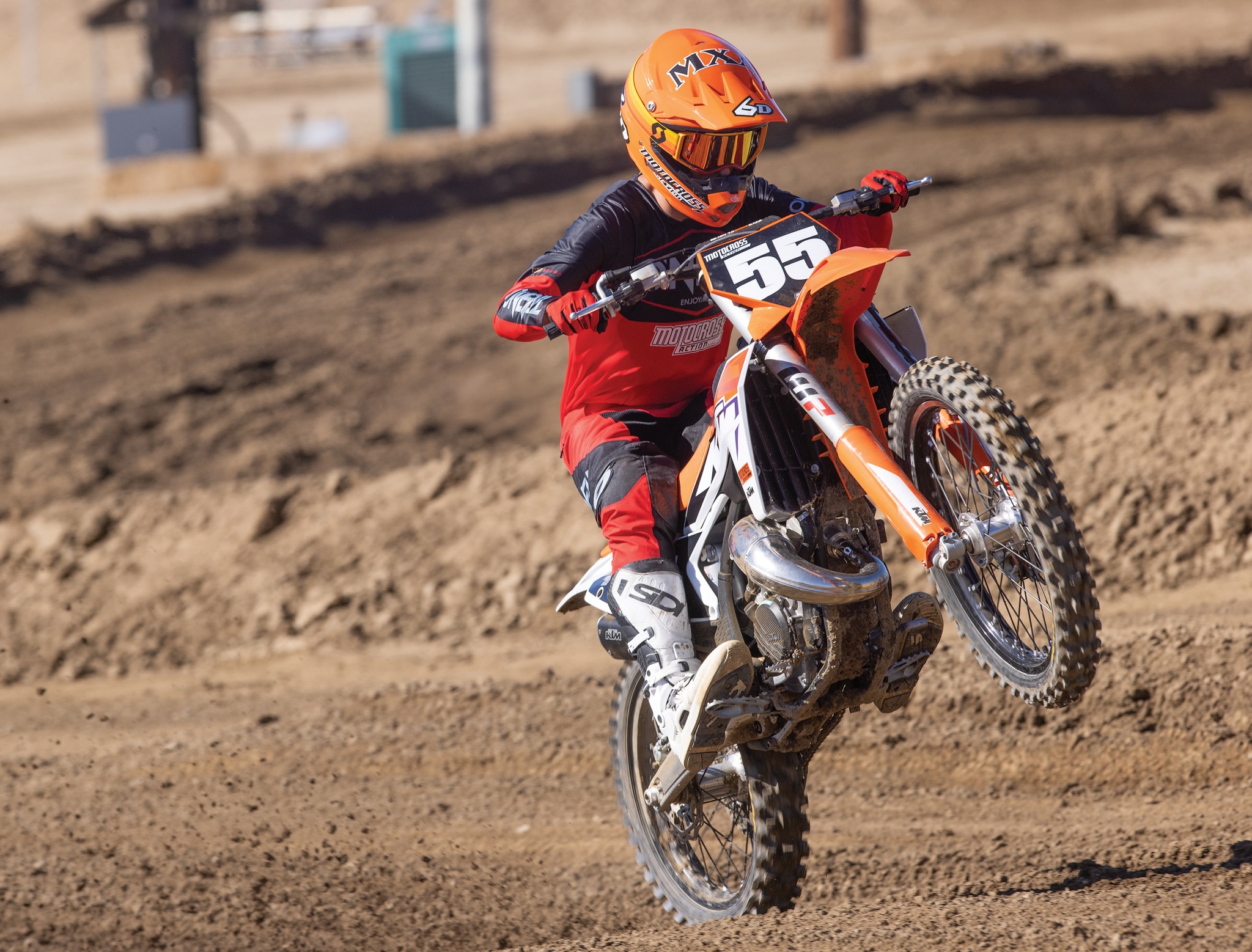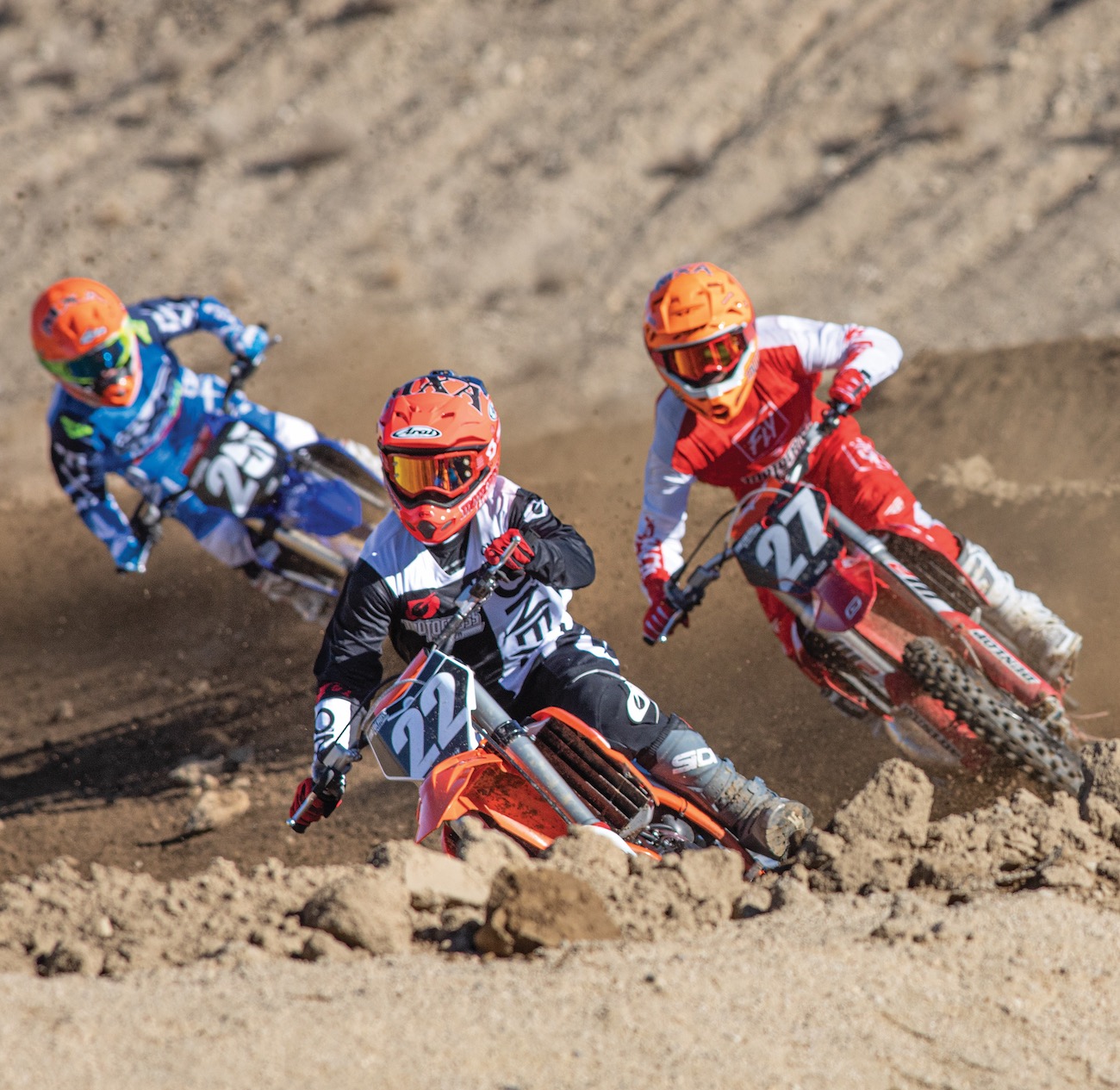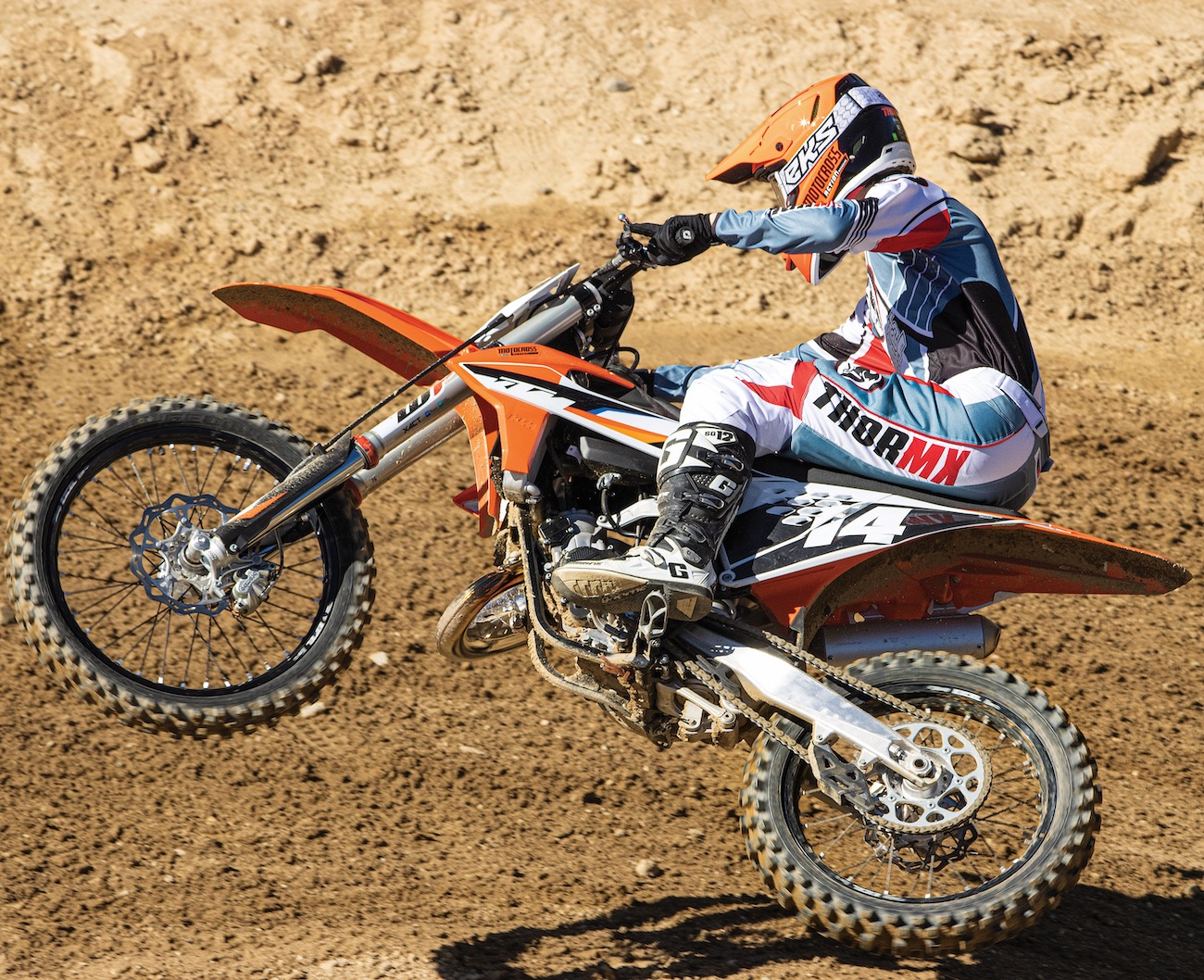TEN THINGS ABOUT MAXIMIZING YOUR SPEED ON A 125 TWO-STROKE
(1) History. The 125cc two-stroke is the original entry point to full-scale dirt bike riding. It has been a much-needed stepping stone for every rider, young and old, to learn the basics of throttle control, shifting and clutch usage before moving up to bigger bikes. However, thanks to the AMA’s handicap rules (the AMA allowed four-strokes to be twice the displacement), 125 two-strokes are no longer considered viable race bikes. Still, 125s are a blast to ride. They’re easy and affordable to maintain, and they teach valuable lessons to any rider humble enough to learn.
(2) Dyno numbers. Yamaha is the only Japanese manufacturer still making 125 two-strokes. The YZ125 makes 35.64 horsepower with 16.09 pound-feet of torque, while the 2024 YZ250F four-stroke hits 42.78 horsepower with 19.61 pound-feet of torque on the dyno. The 7 horsepower and 6-1/2 pound-feet of torque make all the difference in the world.
(3) Momentum. The most important lesson to learn on a 125 is how to keep your momentum up. Without the torque of a 250 four-stroke, you can’t afford to chop the throttle if you want to clear the next jump or avoid getting passed.
(4) Tread lightly. Think of riding a 125 like riding a mountain bike. If you’re pedaling up a hill and you ride into a patch of sand, you’ll lose momentum and your legs will suffer. Similarly, a 125 two-stroke can easily lose momentum in sandy berms. A 125 will teach you to find the “sweet spot” on the track where you can keep momentum up by hitting outside berms while still “treading lightly” to keep from burying the rear wheel and losing speed.
(5) Quick foot. Two-strokes have a smaller window of power than four-strokes, which means you need to get comfortable with shifting a lot. This is one of the hardest adjustments for new 125 riders. They’re immediately punished if they don’t shift down enough times coming into a turn; however, if they they shift up too early too early, they’ll be punished again.
(6) Clutch work. Staying in the power on a 125 takes skillful clutch work. It’s best to feather the clutch just slightly on corner exit to ramp up the engine’s rpm and power; however, with excessive clutch use comes burnt clutch plates. Be sure to change your oil and check your clutch more often when riding a 125.
(7) Weight distribution. Smaller and lighter riders won’t need to worry about weight distribution, but taller and heavier 125 riders will learn that body position has a bigger impact on a 125. If you’re a heavy rider, do not lean too far back when getting on the gas. Sometimes leaning forward helps break the rear wheel loose, which ramps up the rpm and gets you up to speed faster. A big boy on a small bike can bog down the engine by weighting the rear tire too much.
(8) Angles. The same four-stroke engines that have made riders lazy have also changed the way riders hit corners. On two-strokes, 125s especially, you have to angle your turns by going outside-in to carry the magic “M” word—momentum. Keep your speed up by making smooth, round lines in the corners rather than stop-and-go pivots. Additionally, try to be light on the rear brake to prevent it from stopping the rear wheel.
(9) Smooth is fast. Because of the lack of horsepower, you can’t afford to make a mistake when racing a 125 two-stroke. For example, losing the rear end in the turn before the uphill at Glen Helen is magnified when you don’t have momentum for the steep, 22-story uphill. The old saying of “go slower to go faster” rings true in the 125 ranks. A smooth lap riding at 90 percent of your potential is usually faster than an all-out lap where you’re pushing 100 percent because you are more calculated and you make fewer mistakes.
(10) Follow the leader. Can you tell? The 125 class is a game of momentum. Sometimes that means you have to follow the rider in front of you through a corner, even when your instinct is to take a different line. Odds are, if you deviate from the ideal line and venture into softer or tighter terrain to make a pass, you won’t have the speed to make it happen. More than on any other bike, you have to be strategic when making a pass on a 125.









Comments are closed.